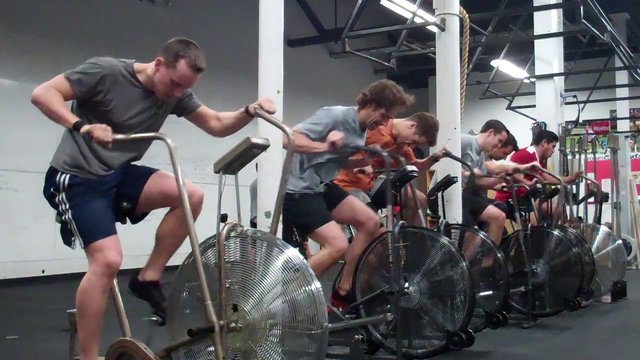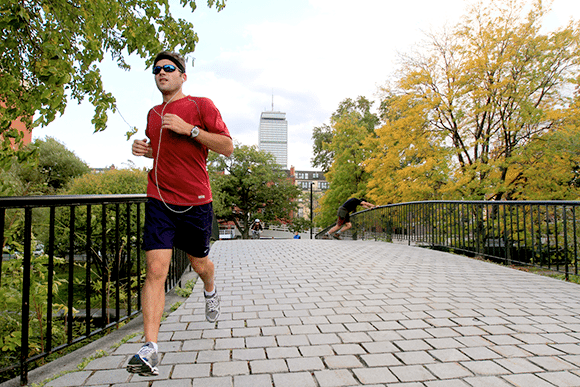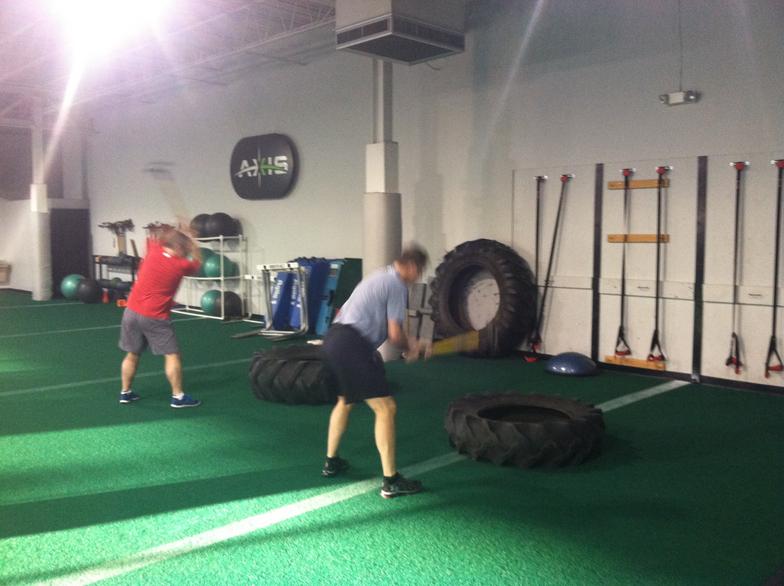Introduction
In building a strength and conditioning program for any sport, the first step is identifying the most important physical characteristics for that sport. Success in MMA comes down to four primary qualities:
1. Technique
2. Conditioning
3. Strength and power
4. Flexibility
Technique is first and foremost in any sport. Just as an incredibly strong and fast wide receiver is of little use if he can’t run a crisp route or catch a football, an extremely strong, well-conditioned white belt will get beat every time by an experienced grappler with superior technique. Practicing your sport will always yield the fastest improvements, and any outside training must compliment your sport practice, not detract from it.
Conditioning is perhaps the most important aspect of MMA outside of the actual techniques. After all, all the strength in the world means nothing if you can’t maintain it after the first couple minutes of a fight. As vital as conditioning is for success, however, for the most part it can be taken care of in your on-the-mat training. Live sparring is the most metabolically specific conditioning you can do. The need for supplementary conditioning in the weight room is therefore dictated by the amount of MMA training you’re doing. A professional fighter who trains multiple times per day between jiu jitsu, muay thai, boxing, and wrestling will need far less conditioning outside their sport than someone new to the sport only practicing twice per week.
Even for more experienced fighters, however, supplementary conditioning is beneficial. Leading up to a competition conditioning becomes more important and it may be wise to add extra work to ensure you are ready for a long fight or the grind of multiple rounds in a tournament. Additionally, injuries and vacations often mean your training is limited. In these instances supplementary conditioning can help ensure as little drop off as possible when you’re able to return.
When designing a conditioning workout for MMA it’s important to think about the specific energy system demands of the sport. Metabolically, grappling is a highly anaerobic activity. The combination of short, very intense bursts of action interspersed by brief periods of less intense work leads to huge buildups of lactate and oxygen debt. For this reason, the best form of conditioning is one that maintains a very high intensity of effort and allows minimal rest.
Interval Training
Intervals are exactly what they sound like: a brief interval of work, followed by a period of rest. Work to rest ratios and total time can be manipulated to more closely mimic the demands of the particular sport you’re training for. Marathon runners, for example, frequently do mile intervals as “speed work,” while football players run repeat 110’s or half gassers to prepare for their season. In MMA and jiu jitsu, fights can range anywhere from 5-25 minutes. Working toward the upper end of that continuum ensures that you are prepared for any fight length.
A few options for interval training are below:
Hill sprints
One of the best forms of conditioning out there. Find a hill. Distance and grade aren’t particularly important. You’re going to be stuck with what you have. Shoot for something 30 yards long at a minimum. Sprint up as fast as you can, walk down, and repeat. The number of sprints you do will be dictated by the length and grade of the hill. The first couple times out see how you feel. After that, slowly start to build up the volume, shooting for 20 minutes or so of total work.
Treadmill sprints
If you don’t have a hill the next best thing it to hop on a treadmill and crank up the speed and incline. Run repeat sprints for 15 seconds with 45 seconds of rest in between for 20-30 minutes.
Airdyne bike
A favorite of wrestlers, this is great because it involves the upper and lower body.
A couple options:
20 seconds legs only, 20 seconds arms only, 20 seconds rest. 3 rounds of 6-8 minutes.
Arms and legs together- 20 seconds on, 40 seconds off. 3 rounds of 6-8 minutes.

The Airdyne bike is a favorite strength and conditioning tool of wrestlers.
Tabata
Tabata circuits are fantastic fat burners and an excellent form of conditioning. Pick one exercise, such as DB swings, mountain climbers, or a DB push press. Alternate 20 seconds of work with 10 seconds of rest for four minutes (8 total rounds). Take a short 1-2 minute rest and repeat the Tabata, with the same exercise or a different one, 2-3 more times.
Metabolic Circuits
My favorite form of conditioning. Combine 3-5 total body exercises in a circuit and go through continuously for either a predetermined amount of time or until you complete a prescribed number of rounds. These are great because, unlike interval training, which can get monotonous, keeping track of times and rounds completed in these circuits introduces a component of competition, both with yourself and among training partners, which can be a powerful motivator. Additionally, local muscular endurance is huge in grappling. Thus, the inclusion of upper body exercises like battle ropes or medicine ball slams in a conditioning circuit can help more fully encompass and mimic the demands of the sport.
Complete six rounds as fast as possible
- Battle Ropes- 10 reps
- MB Slam- 10 reps
- Burpees- 10 reps
- DB Squat to Press- 10 reps
- Plate Push- 30 yards
Complete as many rounds as possible in ten minutes
- Sledgehammer Hits- 10 reps
- DB Swing- 10 reps
- Sled Push- 30 yards
- Suicide- 5, 10, 15 yds
Steady State Cardio
While there is a component of grappling that is aerobic, longer duration steady state cardio like jogging or swimming is generally not specific to the sport, and therefore not the best thing you can be doing. One benefit of steady state cardio is that it will increase blood flow, flush metabolites out of muscle, and help facilitate the recovery process between intense training sessions. If you are going to incorporate it, it should be on an off day, followed by stretching and foam rolling, to help alleviate muscle soreness or tightness and prepare you for the next day’s training. Make sure the intensity is low enough that it doesn’t sap your energy and detract from the more important aspects of your training.

Steady state cardio like jogging is generally not specific enough to the combat sports and should be limited.
Improving sport specific skills should be your first priority in any sport. Beyond this, improving your conditioning level in a way that is specific to the demands of the sport should be next on your list. While there are numerous other ways to go about it, the workouts and methods described above can go a long way in helping you maintain your strength and energy late into a fight.
In part two of this article, I’ll discuss the importance of strength and power, how to build a basic strength program, and ways to improve flexibility.
